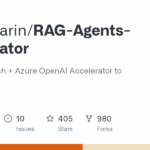yomo
Basic Information
yomo is presented as a serverless AI agent framework paired with geo-distributed edge AI infrastructure. It is intended as a foundation for developers and teams who need to build, deploy, and operate AI-driven agents without managing traditional server infrastructure. The project emphasizes a serverless model combined with edge deployment across geographic regions so agents can run on distributed nodes close to users or data sources. The repo therefore targets creation and orchestration of agent workloads that benefit from edge placement and geographic distribution. The description frames the project as infrastructure and tooling for running AI agents in a serverless, edge-first manner rather than a single end-user application.
Links
Stars
1790
App URL
Github Repository
Categorization
App Details
Features
The repository description highlights three primary capabilities: a serverless execution model for AI agents, an agent-oriented framework to construct AI-driven behaviors, and geo-distributed edge AI infrastructure to place workloads across regions. These elements imply support for deploying agents without manual server provisioning, operating agents across multiple geographic locations, and integrating agent logic with edge compute resources. The feature set centers on infrastructure and framework-level functionality for agent lifecycle and deployment in a distributed edge environment rather than on specific agent implementations or end-user feature sets.
Use Cases
By combining serverless operation with geo-distributed edge infrastructure, yomo aims to reduce operational overhead for teams building AI agents. The framework approach can let developers focus on agent logic while the platform handles deployment and distribution across edge nodes. Geo-distribution enables running agents nearer to users or data sources, which can be advantageous for performance-sensitive or locality-aware use cases. Overall, the project is helpful to organizations that want infrastructure and tooling to deploy and manage AI agents at scale across multiple regions without maintaining traditional server fleets.








